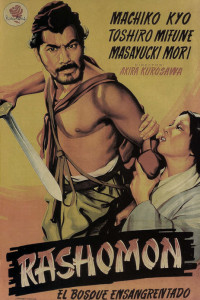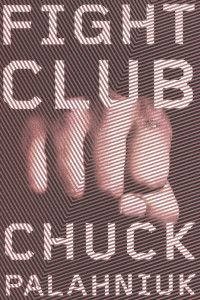The unreliable narrator is a useful fiction device for creating surprise in your story and avoiding predictability. Here are some ways that unreliable narrators can be used to shape a novel’s form or to surprise and build tension in the reader:
What is an unreliable narrator?
What is an unreliable narrator? This is a narrator (usually narrating in the first person) who is discovered to be an unreliable source of 'the truth' or trustworthy information in a story. In the first pages of a book like Vladimir Nabokov's Lolita, the narrator Humbert Humbert’s justification of his lust for young girls signals to the reader that he is not to be trusted. In Gone Girl, a couple describes their relationship in alternating chapters so differently that the reader suspects at least one of them is unreliable, and then one character outright admits to being untruthful.
Examples of unreliable narration: Creating narrative suspense
There are many more examples of unreliable narrators that are introduced to create suspense.
In Kazuo Ishiguro's Never Let Me Go, the narrator, Kathy, acknowledges that she is reconstructing events from memory and that they may not be entirely accurate. Kathy also withholds information from the reader although this is because in the first part of the book she is writing about a time when she did not have full information about the reality of her disturbing situation. This creates a kind of unreliability as well because the reader is left to piece things together from clues Kathy drops without her fully comprehending their importance herself.
In Gone Girl, the reader keeps reading to find out what really happened, what the real story is behind the facades presented by the two narrators. The two are not just unreliable narrators in terms of how they present themselves to the reader but in how they present themselves to everyone else in their lives. In Never Let Me Go, the unreliable narrator similarly keeps the reader guessing about what is going on and what kind of a world the narrator is inhabiting until the book's later shocking surprise.
Untruthful narrators can also be used to shape narrative form:
Using unreliable narrators to create interesting narrative form

Unreliable narrators do not have to be written in the first person necessarily. The impressions of a protagonist formed by other characters can differ, making the truth of the character's life difficult to know. One of the classic examples of the unreliable narrator influencing the form of a story is actually a film, Akira Kuroshawa’s Rashomon. The film has three different narrators relate their own version of a story about the death of a samurai, but each story differs markedly and attributes the death to a different cause. At the end, viewers are left to make up their own minds as to which account is the true one.
'Narrative form' is a term from literary criticism used to describe the structure and type of story that is being told. A form is different from genre; a single form might be used to write a story in a number of genres. Captivity and adventure narratives are two examples of narrative forms.
A myth is arguably an inherently unreliable form, and a writer who is playing with myth as a form for a fantasy novel can use the unreliable narrator in a number of ways. For example, a myth may have been related to a character in order to influence that character to act in a particular way or to hide the truth about an event or phenomenon. In another case, a story centered around a myth might show how historical events and information can be lost with speculation taking their place. An example of this is to be found in the middle chapter of David Mitchell's Cloud Atlas, in which a local myth about a malevolent ghoul inhabiting a mountain deters a tribe from ascending the mountain and discovering historical buildings that explain elements of their collective past. In this way, characters that relate myths can cover up cause and effect, only to later discover new information that provides an alternate explanation of their world.
Unreliable narrators and historical fiction
Historical fiction is one genre in particular that often uses unreliable narrators. This is because history is concerned with conveying the truth about the past (or trying to do so). In historical fiction, this type of narrator can be used to subvert readers' expectations and complicate how 'objective' truth is seen and understood. These narrators can also be used to explore historical mysteries. For example, what happened to the settlers who vanished with barely a trace from the Roanoke colony in the United States in the 16th century? What became of the princes who disappeared from captivity in the Tower of London in the 15th century? What caused the collapse of the Mayan civilisation?
A narrator who answers these questions but appears to be unreliable can raise further questions for the reader about what has actually happened. In fact, the unreliable narrator can often be used as a device to inform the reader about what really happened by forcing the reader to read between the lines. For example, a narrator telling a story about the princes in the Tower of London may be anxious to exonerate himself with the reader even though he actually murdered them. Once established as untruthful, he might then include enough discrepancies for the reader to piece together what really happened. This complex narrative structure can be satisfying as the reader takes an active part in deciding how the separate strands of the story weave together to create a full picture.
The use of unreliable narrators in captivity narratives
A captivity narrative is a story in which a narrator relates the story of their captivity. One classic example is A High Wind in Jamaica by Richard Hughes. It is unclear in this novel precisely who is narrating it, but the narrator relates a story about how a group of children abducted by pirates almost sociopathically manipulate those pirates. All the while, the narrator seems unaware of the more disturbing aspects of his own narrative. For the reader, this creates a growing sense of suspense and horror.
A more recent example is Emma Donoghue’s Room. In this story, the narrator is a five-year-old boy, Jack, who has been held captive in a single room with his mother for his entire life. Both the child’s age and his limited life experience make his captivity narration unreliable. The reader only gradually comprehends the cruelty of the situation, while Jack does not. In this example, using a child as an unreliable narrator adds extra weight to the psychological impact of the novel and the way it underscores children's vulnerability and dependence on adults for protection and information about their world.
While autobiography is usually thought of as a nonfictional form, some writers play with fictional form in autobiography, writing about themselves as unreliable narrators. A story could be entirely fictional and written as an autobiography. More common is the novel that mixes fact and fiction. While the book A Heartbreaking Work of Staggering Genius by Dave Eggers is often referred to as a memoir, Eggers himself admits that his memory is unreliable and that parts of the book are exaggerated and fabricated. Some sections are clearly fantasy. However, the characters are all drawn from real people and tell the story of Eggers becoming the guardian of his brother after their parents’ death. Sylvia Plath originally published her novel The Bell Jar, based on her own suicide attempt, under a pseudonym because of its parallels to her own life. It is unclear how reliable the protagonist of The Bell Jar is, despite the parallels with Plath's life.
In a few prominent cases writers themselves have proved to be unreliable narrators about their fiction and their lives. One of the most famous cases is that of James Frey, whose addiction memoir A Million Little Pieces contained a number of fabrications.
Just like the unreliable narrator in fiction, cases such as these cause the reader to examine their assumptions about truth, lies, memory and trust as well as the assumption that fiction is entirely separate from life. We all tell stories that fictionalize, exaggerate or omit (whether deliberately or not) aspects of our own lives. We also have a tendency to trust the writer who is telling us a story, but even allegedly true stories cannot always be trusted. Writers can use this insight to construct their own unreliable narrators and to destabilise readers with that unreliability. When readers begin to question the truth of what they have been told, this can create tension within the story as well as curiosity regarding characters' motivations for being dishonest.
The unreliable narrator and story structure

The structure and tension in a story can rely heavily on the narrator being an unreliable one. In Bret Easton Ellis' American Psycho, a brutal serial killer and investment banker describes his gruesome crimes, but the murders he commits are possibly all fabrications. The entire premise of Fight Club rests upon a major error of perception on the part of the main character.
We Need To Talk About Kevin is another excellent example of a novel that uses the unreliable narrator to create its own unique structure and build tension. The story is told in the form of a series of letters to the protagonist’s husband, but in addition to withholding a great deal of key information from the reader, the protagonist’s account is also unreliable. She writes about their son, who murdered a number of children at his school, but it is unclear whether the son turned out the way he did because of how his mother treated him or that she treated him the way he did because he was an impossible and threatening child his entire life.
Sometimes, a narrator is unreliable because of misinformation they have been given. Throughout most of the classic novel Rebecca by Daphne Du Maurier, the narrator has been operating under a set of assumptions about her husband’s first wife that are incorrect, and these false assumptions shape her actions and the way the novel develops.
In addition to being a tool for character development, the unreliable narrator is a critical device for shaping the form and structure of a story and for developing tension. The unreliable narrator allows the writer to withhold information from the reader that is later revealed either through the accumulation of clues that contradict the narrator or in a single, shocking reveal. We are all, to some extent, unreliable narrators about our own lives, so perhaps the omniscient narrator is the only true reliable narrator in fiction. Even the most honest characters will misremember conversations and events. You can use these very natural lapses and emphasize their narrative importance to build suspense over the course of a novel.
Ready to start plotting your own novel and fleshing out the bones of your own unreliable narrator? Go here to start on the Story Builder.









I have a feeling I'm going to be visiting your website often next mont & hopefully I won't bombard you with too many questions. I'm tackling my first unreliable narrator for NaNo 2015 (probably more than I'm equipped to take on, but I love a challenge.) I noticed that your site is loaded with resourceful. accurate and up to date information about unreliable narrators, as it is on a great many other topics. Just wanted to forewarn you you that I will be dropping by from time to time, whenever I need to check my facts or just read interesting tidbits about unreliable narrators and other fictional topics. I love how you present your material. Your posts are never boring or simply factual or restating stats. You are a writer though and through and your cheeky, fresh voice scatters throughout your words. I always look forward to your articles. I feel bad because I don't often leave a comment. I need to be better about that and I promise to work on it. I'm rather long winded and when I comment, I tend to leave really long comments, so often I feel like its better that I just read and send good thoughts. No one needs another blogger taking up half a page every time they leave a comment. I already realize the solution to my problem (that has to be even more than half the battle, LOL) If I leave more frequent comments then I won't feel the need to write such lengthy comments. I get it ... I do. I really do. Advice, easier given than taken and we all have our own vices. So, I will begin working on leaving more frequent, shorter comments. That way I won't feel the need to leave such long ones when I do comment. It's a problem of mine. I feel like the blog owner will feel slighted, if someone who seldom leaves a comment leaves a one liner. She will think, "Hmm who is this chick, she stumbles upon my blog and leaves some half ass one- line comment. yeah right. I bet she thinks , I'm gonna bust my happy ass into a sweat running over to her blog to leave her a comment. Well she can think again." Man. I should have saved that for next month's Insecure Writers Support Group (IWSG). And the thing is, I read your blog on a regular basis and I'm a big fan. Sorry so long and sorry for laying all this on you. I just wanted you to know that I read often and wanted you to also know why I don't usually leave comments. I recently read an article on a good friend's blog about "Blog leeches," (just love that word) which is about people who leave one or two comments with the hope of gaining your following + more, and that's kept me from leaving comments on bogs I don't have the time to comment on a regular basis. Take care and I'll be back to visit a lot more in November Melissa Sugar Twitter @Msugar13 sugarlaw13@live.com http://melissasugarwrites.com
Melissa Sugar - Over 9 years ago
Hi Melissa. Don't worry about the length of your comments, it's lovely to hear from readers. Thanks for the kind words about the blog, I'm really glad you're finding the writing advice useful. If you want to get feedback from other writers on extracts of your unreliable narrator first attempt, you can use the critiques section of Now Novel. Give it a try if you're ever feeling like you need another person's perspective during the process. Good luck for NaNoWriMo! I hope you have fun. B
Bridget At Now Novel - Over 9 years ago